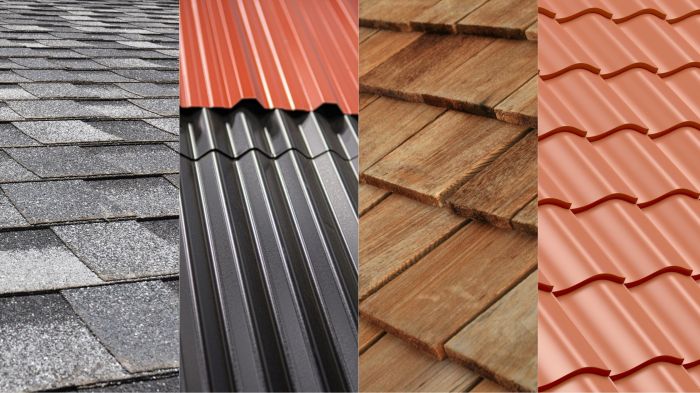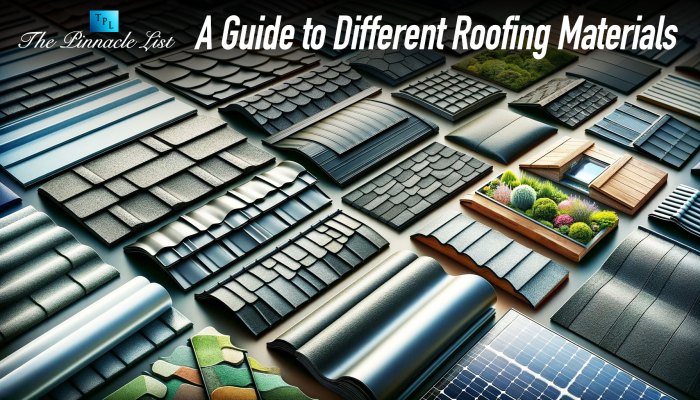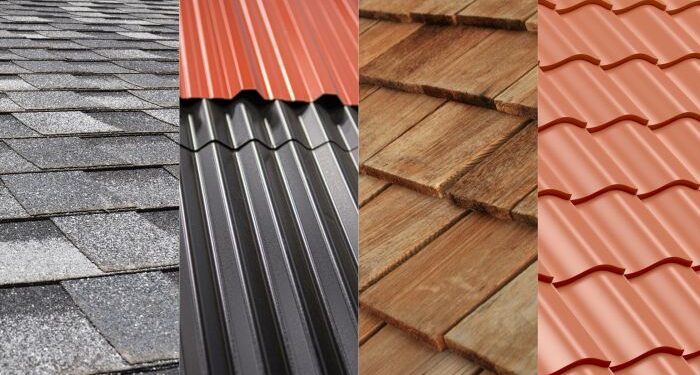As we delve into the world of roofing materials, we uncover a diverse landscape of options used across different regions globally. From traditional to modern choices, each material comes with its own set of characteristics and benefits, shaping the roofs of buildings around the world.
Let's explore the top roofing materials that have stood the test of time and continue to be popular choices for construction projects worldwide.
Roofing materials play a crucial role in not just protecting structures but also in enhancing their aesthetics and energy efficiency. Understanding the various types available and their impact on durability, longevity, environmental sustainability, and cost can help in making informed decisions when it comes to roofing projects.
Types of Roofing Materials
Roofing materials vary across different regions based on factors such as climate, availability of resources, and architectural traditions. Here are five commonly used types of roofing materials around the world:
1. Asphalt Shingles
Asphalt shingles are popular in North America and are known for their affordability and ease of installation. They are versatile, available in various colors and styles, and provide good protection against the elements.
2. Clay Tiles
Clay tiles are commonly used in Mediterranean and South American regions. They are durable, fire-resistant, and provide excellent insulation. Additionally, clay tiles give a distinctive aesthetic touch to buildings.
3. Metal Roofing
Metal roofing is prevalent in regions with extreme weather conditions such as Australia and parts of Europe. It is long-lasting, lightweight, and offers high resistance to wind, fire, and pests. Metal roofs can also be recycled, making them an eco-friendly option.
4. Slate Roofing
Slate roofing is popular in Europe and North America. It is known for its natural beauty, longevity, and resistance to rot and fire. While more expensive than other materials, slate roofs can last for centuries with proper maintenance.
5. Thatched Roofing
Thatched roofing is commonly found in tropical regions like Southeast Asia and Africa. Made from natural materials like palm leaves or straw, thatched roofs provide excellent insulation and can withstand harsh weather conditions. They also blend seamlessly with the natural surroundings.
Durability and Longevity
When it comes to roofing materials, durability and longevity are crucial factors to consider, especially in varying climatic conditions.
Traditional Roofing Materials vs. Modern Alternatives
Traditional roofing materials like clay tiles, slate, and wood shingles have been known for their durability over centuries. These materials are still popular in many regions due to their long-lasting properties. However, modern alternatives such as metal roofing, asphalt shingles, and synthetic materials have also gained popularity for their durability and resistance to harsh weather conditions.
Examples of Long-Lasting Roofing Materials
- Metal Roofing: Metal roofs are known for their longevity, with some lasting up to 50 years or more. They are resistant to fire, rot, and insects, making them a durable option for various climates.
- Concrete Tiles: Concrete tiles are another long-lasting roofing material, with a lifespan of 50 years or more. They are durable, energy-efficient, and can withstand extreme weather conditions.
- Asphalt Shingles: While asphalt shingles may not have the same longevity as metal or concrete, they still offer a durable option with a lifespan of 20-30 years. They are cost-effective and provide good protection against the elements.
Environmental Impact
When it comes to roofing materials, considering the environmental impact is crucial in today's world where sustainability is a top priority. Different materials have varying levels of eco-friendliness, energy efficiency, and recyclability.
Sustainability and Eco-friendliness
Some roofing materials, such as metal and clay tiles, are known for their sustainability and eco-friendliness. These materials are often sourced responsibly and have a lower impact on the environment compared to traditional asphalt shingles. Metal roofs, for example, are highly recyclable and can be made from recycled materials, reducing the need for new resources.
Energy Efficiency in Buildings
Roofing materials can also play a significant role in the energy efficiency of buildings. Materials like cool roofs, which reflect sunlight and heat away from the building, can help reduce energy consumption by keeping the interior cooler. This can lead to lower energy bills and less strain on HVAC systems, ultimately reducing the overall carbon footprint of a building.
Recyclability and Environmental Impact
Commonly used roofing materials like asphalt shingles pose challenges when it comes to recyclability. These materials can end up in landfills after being replaced, contributing to environmental pollution. On the other hand, materials like wood shakes and metal roofs are highly recyclable and can be repurposed into new products, reducing waste and environmental impact.
Cost and Maintenance Considerations

When it comes to choosing the right roofing material for your home, cost and maintenance are crucial factors to consider. The upfront costs and ongoing maintenance requirements can vary significantly depending on the type of roofing material you choose.: It's essential to compare the initial costs of different roofing materials, as well as the long-term maintenance expenses associated with each option.
Understanding the cost-effectiveness of popular roofing materials over their lifespan can help you make an informed decision that aligns with your budget and maintenance capabilities.
Upfront Costs Comparison
- Asphalt shingles: Asphalt shingles are one of the most affordable roofing materials, making them a popular choice for homeowners on a budget. The upfront costs for asphalt shingles are relatively low compared to other options.
- Metal roofing: Metal roofing is a more expensive option upfront, but it offers durability and longevity that can make it a cost-effective choice in the long run. The initial investment in metal roofing may be higher, but it can save you money on maintenance and replacement costs over time.
- Clay tiles: Clay tiles are known for their aesthetic appeal and durability, but they come with a higher upfront cost. While clay tiles may be more expensive initially, their long lifespan and minimal maintenance requirements can make them a cost-effective choice in the long term.
Maintenance Requirements and Costs
- Asphalt shingles: Asphalt shingles are relatively easy to maintain, requiring periodic inspections and minor repairs. The maintenance costs for asphalt shingles are generally low, making them a budget-friendly option for homeowners.
- Metal roofing: Metal roofing is low-maintenance and durable, requiring minimal upkeep over its lifespan. While the initial cost of metal roofing may be higher, the maintenance costs are typically lower compared to other materials.
- Clay tiles: Clay tiles are durable and resistant to harsh weather conditions, but they may require occasional maintenance to ensure longevity. The maintenance costs for clay tiles are moderate, but their long lifespan can offset these expenses.
Cost-Effectiveness Over Lifespan
- When considering the cost-effectiveness of roofing materials over their lifespan, it's important to factor in not only the initial costs but also the long-term maintenance expenses. Materials like metal roofing and clay tiles, although pricier upfront, can prove to be cost-effective choices due to their durability and minimal maintenance requirements.
- Asphalt shingles, while more affordable initially, may require more frequent repairs and replacements over time, potentially increasing maintenance costs in the long run. Understanding the total cost of ownership for each roofing material can help you make a decision that fits your budget and maintenance preferences.
Ultimate Conclusion

In conclusion, the world of roofing materials is vast and varied, offering a range of options to suit different needs and preferences. Whether prioritizing durability, eco-friendliness, or cost-effectiveness, there is a roofing material out there to meet every requirement. By choosing the right material, you can ensure a sturdy, long-lasting roof that adds value to your property while also contributing to a more sustainable future.
Popular Questions
What are the most common types of roofing materials used globally?
The most common types include asphalt shingles, metal roofing, clay tiles, slate, and wood shakes.
Which roofing material is known for its exceptional durability?
Metal roofing is renowned for its longevity and ability to withstand various weather conditions.
Are traditional roofing materials more long-lasting than modern alternatives?
In general, traditional materials like slate and clay tiles are known for their longevity compared to some modern alternatives.
How do roofing materials contribute to energy efficiency in buildings?
Materials like metal roofing and cool roofs can reflect sunlight and reduce heat absorption, leading to lower energy consumption for cooling.
Which roofing material offers the best cost-effectiveness over its lifespan?
Asphalt shingles are often seen as a cost-effective option due to their affordable upfront costs and reasonable durability.












